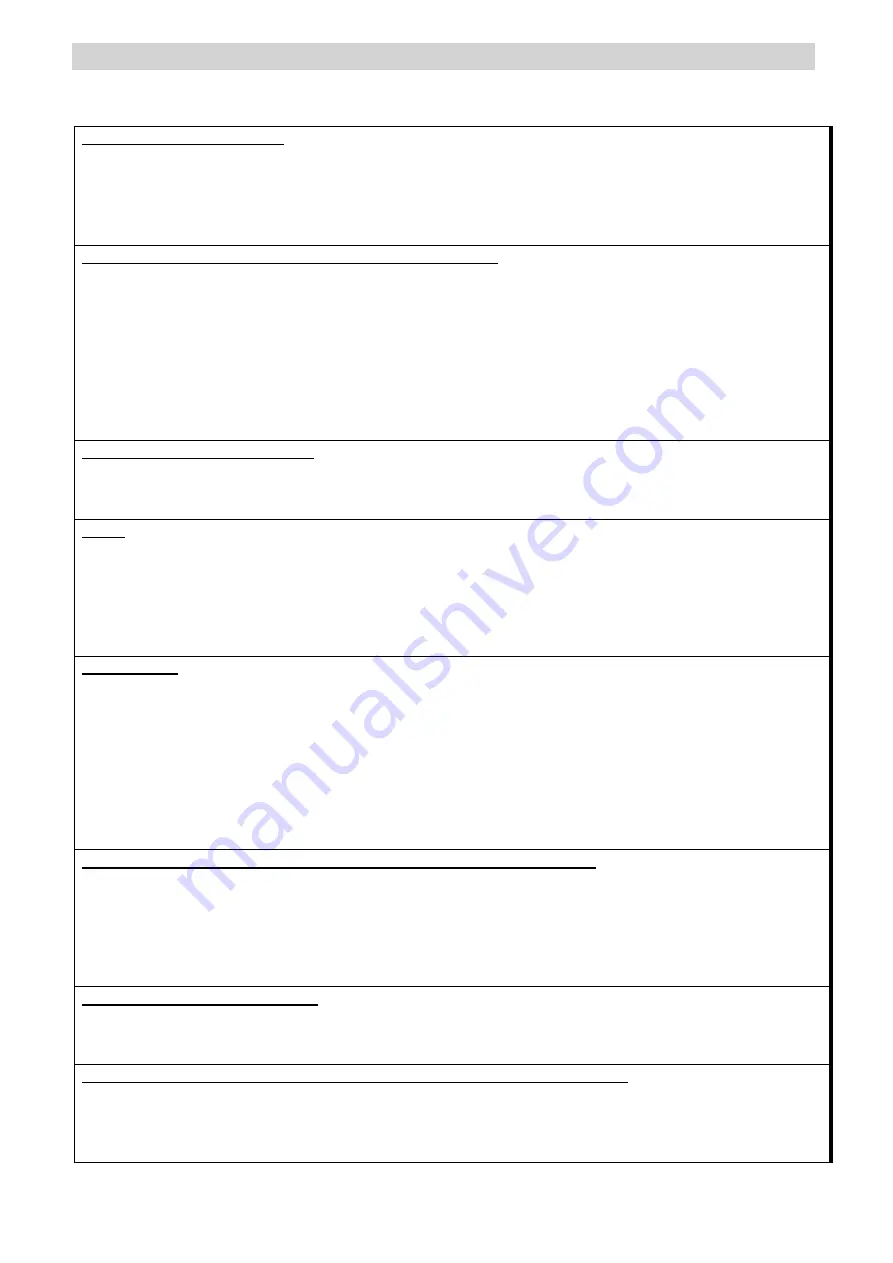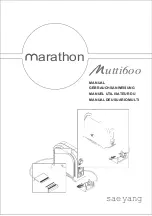
DUSTGUARD Page 6 of 13
6
Slipping, tripping and falling
•
The equipment is designed to spray water which will inevitably create wet and potentially
slippery areas
•
Such areas should be avoided when wet.
•
Be aware of and take additional precautions in adverse weather, notably ice and snow.
•
Protective (slip resistant) safety footwear with crush protection should be worn.
Electricity and Electrical Hazards – shock, fire, burns etc.
•
Only trained and competent persons, as authorised by the user, are permitted to access
electrical panels or equipment or carry out electrical work.
•
Electrical panels and equipment must always be secured closed and only accessible/
openable using a tool or key which is not available to untrained personnel.
•
The electrical supply must be isolated by disconnection of the battery before carrying out any
work on the panel or equipment, and “proven dead” before contacting any potentially live
parts. Live working should be avoided.
•
The electrics and electrical installation must be periodically inspected and tested to maintain
safety.
Hot surfaces– scalds and burns
•
The engine exhaust gets hot in operation, but is thermally insulated within the engine
enclosure.
•
Avoid all unlagged exhaust parts and allow to cool before making contact with any hot parts
Noise
•
The equipment is engine powered and can generate noise levels of typically 116dB
depending on use.
•
Hearing protection should be worn
•
When in operation a noise survey should be carried out to determine and areas which may
exceed the relevant hearing action limits 80/85dB with appropriate precautions being put in
place by the user.
Legionellosis
•
Legionella bacteria can be present and breed in water at temperatures between 20 and 45C,
and can thrive in the presence of nutrients such as rust, sludge, scale, algae, organic material
or other bacteria.
•
The equipment should therefore be operated outside these temperatures and regularly
cleaned, flushed and maintained to prevent the development and existence of conditions
where nutrients can exist.
•
The system should also be included by the user within his overall legionella assessment and
management programme which will determine any further actions/precautions/monitoring
which may be necessary.
Moving vehicles – potential hazards to O&M staff (pedestrians/on foot)
•
The unit is mobile and therefore can be used in a variety of locations including those where
moving vehicles can be present.
•
It is recommended that the user carries out his own assessment to ensure the safety of
pedestrians/those on foot from any moving vehicles in the area/associated with the wider
operation of this equipment/machinery.
•
Health and Safety Executive publication HSG 136 is one document that covers these matters.
Adequacy of lighting in the area.
•
It is recommended that the user carries out his own assessment to ensure the adequacy of
lighting in each area the machine is to be used to allow safe operation and maintenance of
the equipment.
Access to items installed above ground level/prevention of falls from height
•
Machine operation and access to operating controls is intended to take place at ground level.
•
For any use above ground level the operator should assess the task and provide the
necessary access equipment, ensuring that the equipment (Commando unit & sprayer) are
prevented from falling































